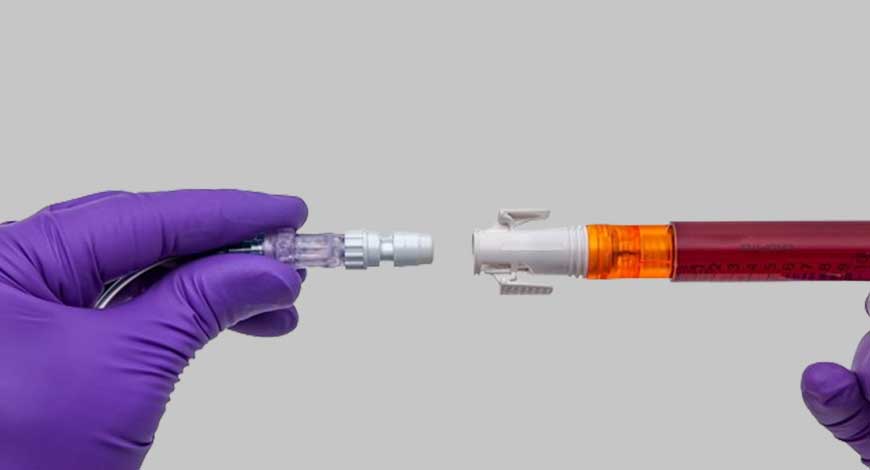Trends
Closed system transfer devices market to reach USD 2.5B by 2029

Closed system transfer devices market in terms of revenue was estimated to be worth $1.1 billion in 2024 and is poised to reach $2.5 billion by 2029, growing at a CAGR of 14.5% from 2024 to 2029 according to a new report by MarketsandMarkets™. The increasing prevalence of chronic diseases such as cancer, rising focus on workplace safety, growing awareness of the benefits of CSTDs, advancements in CSTD technology, and growing regulatory compliance are expected to drive the market growth. However, the substantial expenses associated with implementing CSTD, limited compatibility with certain medications or drug delivery systems, and limited reimbursement hinders the use of CSTDs, thereby hampering the adoption of these products in hospitals and oncology centers to a certain extent.
Closing mechanism system is expected to grow at the highest CAGR during the forecast period
Based on the closing mechanism, the market is segmented into Luer lock systems, push-to-turn systems, click-to-lock systems, and color-to-color alignment systems. In 2023, the Luer lock systems segment accounted for the highest share of 32.5% of the market. The closing mechanism’s primary role is to establish a secure connection within the CSTD system, preventing leaks and hazardous drug exposure. market. Its role in ensuring safety, user experience, and compatibility with existing systems makes it a crucial determinant of market success and growth. This directly impacts the safety of patients and healthcare workers, which is a primary driver for the CSTD.
Membrane-to-membrane systems segment is expected to account for the largest share, by type in the closed system transfer devices market
Based on type, the CSTD market is segmented into membrane-to-membrane systems and needleless systems. In 2023, the membrane-to-membrane systems segment accounted for the largest share of 72.4% of the CSTDs market. The large share and high growth of this segment are attributed to their ease of operation and lower risk of contamination associated with double-membrane containment systems. Membrane-to-membrane systems provide a high level of safety by creating a completely sealed environment during drug transfer. This prevents any potential leakage or contamination, thereby minimizing the risk of hazardous drug exposure for healthcare workers.
Diaphragm-based devices segment accounted for the largest share of closed system transfer devices market in 2023
Based on technology, the CSTDs market is segmented into diaphragm-based devices, compartmentalized devices, and air cleaning/filtration devices. In 2023, the diaphragm-based devices segment accounted for the largest share of 43.0% of the market. Diaphragm-based devices are often compatible with a wide range of drug delivery systems and container closures, providing versatility for various clinical applications. This compatibility enhances their appeal to healthcare facilities seeking flexible solutions for hazardous drug handling. Thus, their effectiveness, safety, ease of use, and compatibility is expected to drive the segment growth.
Vial access components segment accounted for the largest share of closed system transfer devices market in 2023
Based on components, the CSTDs market is segmented into vial access components, male luers, bag spikes, female components, and other components. In 2023, the vial access components segment accounted for the largest share of 24.9% of the market. Vial access components are widely used in healthcare settings for accessing and transferring medications from vials. Also, the design of vial access components is engineered to minimize the risk of leaks, spills, and contamination during medication transfer. By providing a reliable and secure closure mechanism, they enhance the safety and efficacy of closed system transfer devices, which is a critical factor driving market preference.
Hospitals & clinics accounted for the largest share of closed system transfer devices market in 2023
Based on end users, the market is segmented into hospitals & clinics, oncology centers, and other end users. In 2023, hospitals & clinics accounted for the largest share of 82.1% of the CSTDs market. The healthcare facilities, especially hospitals and clinics, are subject to stringent regulatory standards governing the handling of hazardous drugs. Regulatory bodies like OSHA (Occupational Safety and Health Administration) in the United States mandate the use of CSTDs to protect healthcare workers from exposure to hazardous drugs. Compliance with these regulations drives the widespread adoption of CSTDs in hospitals and clinics.
In 2023, North America accounted for the largest share of the closed system transfer devices market
The closed system transfer devices market is segmented into five major regions, namely, North America, Europe, Asia Pacific (APAC), Latin America, and the Middle East and Africa.
North America accounted for the largest share of closed system transfer devices market in 2023. Owing to the continuous development and introduction of advanced CSTD technologies along with enhanced safety, efficiency, and user experience contributes to the high adoption rates of CSTDs in this region. Moreover, stringent regulations governing the handling of hazardous drugs in healthcare settings mandate the use of CSTDs to minimize the risk of exposure to hazardous drugs. Compliance with these regulations drives the demand for CSTDs in the region. MarketsandMarkets™














